|
HOME: www.hiltonpond.org |
|||
THIS WEEK at HILTON POND Installment #631---Visitor # Subscribe for free to our award-winning nature newsletter (Back to Preceding Week; on to Next Week) |
A SOLO TRIP TO UJARRÁS; BANDING RUBY-THROATED HUMMINGBIRDS IN COSTA RICA In November 2015 we took a solo hummingbird banding expedition to Ujarrás, Costa Rica; we were unable to recruit enough participants to take our usual group as part of Operation RubyThroat: The Hummingbird Project. The expedition was funded in large part by ORT alumni from our previous 25 trips; their names are listed at the end of the write-up. We were assisted by long-time colleague Ernesto M. Carman and by Paz Irola and Julio Madriz; the latterw as gracious enough to allow us to run mist nets in his family's Chayote field. Just below is a summary of what turned out to be a very productive trip. All text, maps, charts & photos © Hilton Pond Center
Checks can be sent to Hilton Pond Center at: All contributions are tax-deductible on your |
|---|
|
"This Week at Hilton Pond" is written and photographed by Bill Hilton Jr., executive director of Hilton Pond Center for Piedmont Natural History
|
|
|
Please refer "This Week at Hilton Pond" to others by clicking on this button: |
Comments or questions about this week's installment? Send an E-mail to INFO. (Be sure to scroll down for a tally of birds banded/recaptured during the period, plus other nature notes.) |

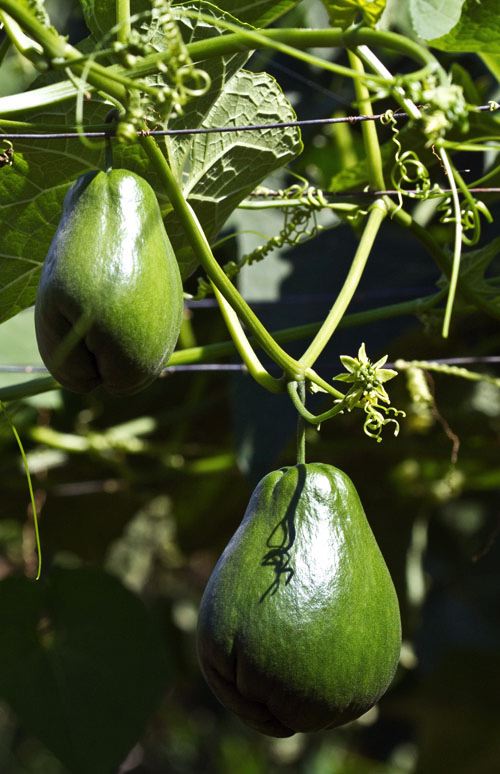 the 11-member "HellBanders" team (plus leaders) of Operation RubyThroat helped catch, band, and release unharmed an unprecedented
the 11-member "HellBanders" team (plus leaders) of Operation RubyThroat helped catch, band, and release unharmed an unprecedented 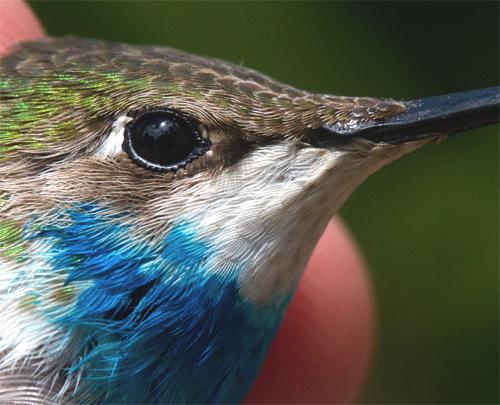 16 (12%) were adult males with full red gorgets, and only 26 (20%) were females (color marked female at right). We're still not sure what such a skewed ratio might mean, with these options as possibilities: 1) There may be a netting/trapping bias; 2) Females may be feeding on food sources other than Chayote; 3) Males may be more likely to explore new areas, thereby wandering into the Orosi Valley in greater numbers; 4) Females may not migrate as far south as Costa Rica, stopping instead in Mexico or a more northerly Central American country; and/or, 5) Something else entirely. (We welcome your own hypotheses explaining this phenomenon; send your ideas to us via
16 (12%) were adult males with full red gorgets, and only 26 (20%) were females (color marked female at right). We're still not sure what such a skewed ratio might mean, with these options as possibilities: 1) There may be a netting/trapping bias; 2) Females may be feeding on food sources other than Chayote; 3) Males may be more likely to explore new areas, thereby wandering into the Orosi Valley in greater numbers; 4) Females may not migrate as far south as Costa Rica, stopping instead in Mexico or a more northerly Central American country; and/or, 5) Something else entirely. (We welcome your own hypotheses explaining this phenomenon; send your ideas to us via 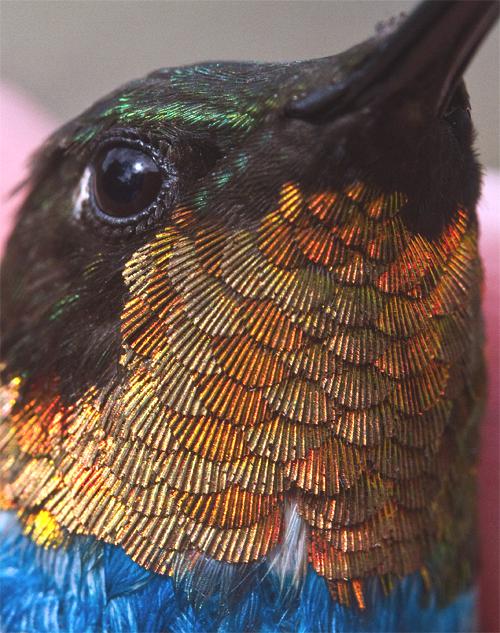 (With just 15 RTHU banded in 2013, odds were against returns in 2014.) In 2012 and again in 2013 we did have re-traps of a male from the preceding year; these were at El Cas, the outdoor restaurant in our Chayote plantation study site. Both were males with full red gorgets (right, with blue color mark); they complement our discovery of RTHU
(With just 15 RTHU banded in 2013, odds were against returns in 2014.) In 2012 and again in 2013 we did have re-traps of a male from the preceding year; these were at El Cas, the outdoor restaurant in our Chayote plantation study site. Both were males with full red gorgets (right, with blue color mark); they complement our discovery of RTHU 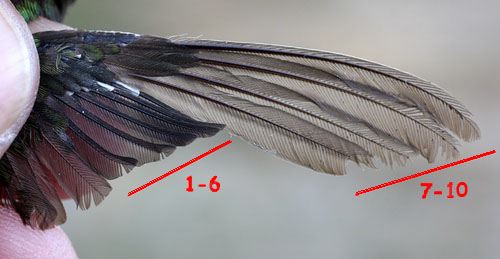 This contrasts greatly with RTHU captured in western Costa Rica in February when most birds have wing molt well underway (above right). By comparison, nearly all ruby-throats captured in Belize in early March through Operation RubyThroat have already finished with flight feather molt--pretty important because by then at least some RTHU are already winging their way north for the breeding season. We did note that nearly every RTHU captured in 2014 at Ujarrás showed significant wear to white tips of their other tail feathers.
This contrasts greatly with RTHU captured in western Costa Rica in February when most birds have wing molt well underway (above right). By comparison, nearly all ruby-throats captured in Belize in early March through Operation RubyThroat have already finished with flight feather molt--pretty important because by then at least some RTHU are already winging their way north for the breeding season. We did note that nearly every RTHU captured in 2014 at Ujarrás showed significant wear to white tips of their other tail feathers.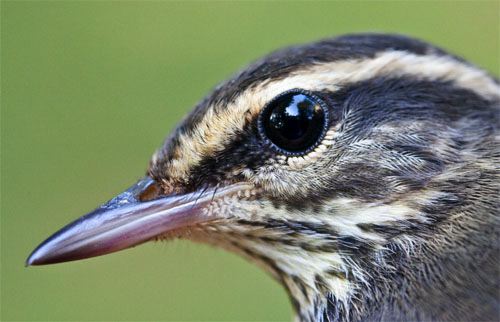 Tennessee Warbler
Tennessee Warbler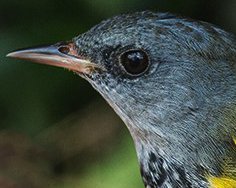 including three
including three 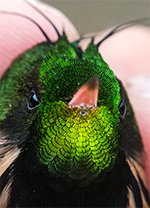 we also captured a male of each of these rather uncommon species in 2013 in the Little Hell Chayote fields; it's possible these were the same individuals year-to -year. They were among the remarkable
we also captured a male of each of these rather uncommon species in 2013 in the Little Hell Chayote fields; it's possible these were the same individuals year-to -year. They were among the remarkable 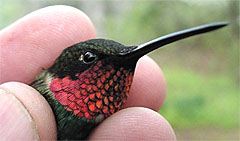 This on-going project has focused primarily on Ruby-throated Hummingbirds (adult male, right) in five of seven Central American countries where RTHU spend "the other half of their year," i.e., when they're not on breeding grounds in North America. (We are hoping to mount an expedition to Honduras in 2016, but Panama's very small RTHU population probably does not warrant an in-depth investigation.) Of our 195 trip participants,
This on-going project has focused primarily on Ruby-throated Hummingbirds (adult male, right) in five of seven Central American countries where RTHU spend "the other half of their year," i.e., when they're not on breeding grounds in North America. (We are hoping to mount an expedition to Honduras in 2016, but Panama's very small RTHU population probably does not warrant an in-depth investigation.) Of our 195 trip participants, 

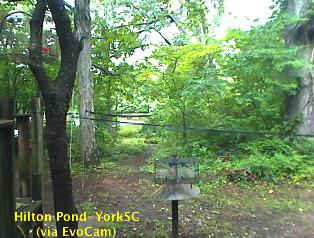


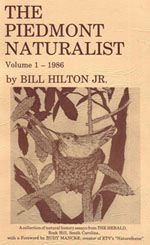



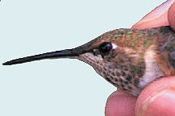 Oct 15 to Mar 15:
Oct 15 to Mar 15: